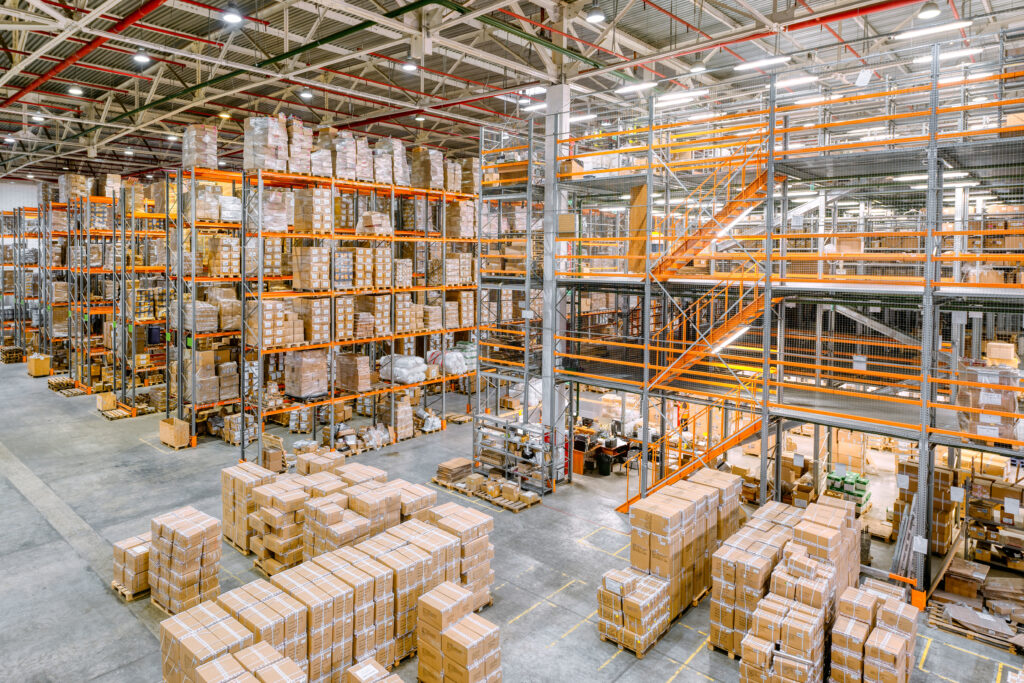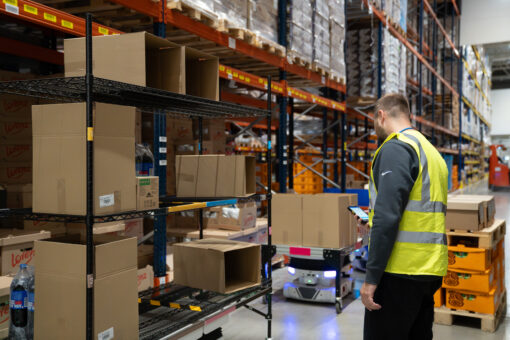WP: How to achieve 400 UPH with Locus Fast Pick
WP: How to achieve 400 UPH with Locus Fast Pick Download Now!
Demystifying Warehouse Robots: Starter Automation or the Real Deal?
Mary Hart, Sr. Content Marketing Manager

When we talk about warehouse automation, it’s easy to get swept up in the idea that deploying robots means complex systems that are only accessible to the biggest companies, and that systems that are flexible are only good for smaller companies. However, this couldn't be further from the truth. Robots, especially autonomous mobile robots (AMRs), are not just a starter automation tool — sure, they work great as such, but they are also the backbone of efficient, modern warehouse operations of all sizes, including the largest warehouses.
There are many reasons why AMRs should be seen as more than just an entry point into automation. Instead, they are a comprehensive solution that offers scalability, flexibility, and a significant return on investment (ROI), making them the ideal choice for warehouses at any stage of their automation journey.
The History of Warehouse Robots
To understand why AMRs are much more than a starting point in warehouse automation, it’s essential to consider the history of robots in warehouses. Initially, they were limited to large, fixed systems that required substantial infrastructure changes and capital investment. These systems were often out of reach for smaller and mid-sized businesses, which made automation seem like a distant dream.
However, the creation of AMRs took automation dreams and turned them into reality. Unlike their fixed predecessors, AMRs are flexible, scalable, and cost-effective. They are designed to integrate seamlessly into your existing warehouse operations without the need for extensive retrofitting or downtime. As a result, warehouse robots have leveled the playing field of access to advanced automation technologies, making it possible for warehouses of all sizes to leverage the benefits of robotics.
How to Scale Up with Robots
One of the most compelling aspects of AMRs is their scalability. Unlike traditional automation systems that require significant upfront investment and long-term commitment, AMRs can be deployed incrementally. This means that businesses can start small — perhaps with just a few robots — and expand their fleet as needed, and you’re sure to want to do so when you see the benefits.
This scalability is crucial in today’s fast-paced market environment. According to a report by ABI Research, mobile robot shipments to the warehouse sector will grow by 34% to reach 426,900 over the course of the year, driven largely by the technology's ability to scale and adapt to changing warehouse needs. Whether a warehouse is dealing with seasonal spikes like peak, expanding its picking velocity footprint, or diversifying its product lines, AMRs offer the flexibility to grow alongside your business.
The Flexibility Factor
Flexibility is another key reason why AMRs are more than just an entry-level automation solution. Unlike fixed automation systems that are designed for only specific tasks or layouts, AMRs can be easily repurposed and redeployed to handle different tasks or work in new areas of your warehouse.
This adaptability is particularly important in a world where consumer demands and market conditions can change rapidly. For instance, during peak shopping seasons, a warehouse might need to ramp up its picking operations and then shift their focus quickly to returns and putaway post-peak. With AMRs, this can be done quickly and efficiently, without the need for significant reconfiguration or downtime. This level of flexibility ensures that your automation investment continues to deliver value, even as your business evolves.
Human-Robot Collaboration
A common misconception about warehouse robots is that they are designed to replace human workers. However, the reality is quite different. AMRs are designed to work alongside humans, handling repetitive and physically demanding tasks, allowing human workers to focus on more complex and rewarding activities.
For example, AMRs can take over the heavy lifting and long-distance travel that are often the most physically taxing parts of warehouse work. This not only reduces the risk of injury and fatigue among workers but also improves overall productivity. According to a study by the McKinsey Global Institute, automation has the potential to increase productivity growth globally by 0.8 to 1.4 percent annually. In the warehouse world, this translates to faster order fulfillment, fewer errors, and a more efficient operation overall.
Real-Time Data and Insights
In addition to their physical capabilities, AMRs offer significant benefits in terms of data collection and analysis. Modern AMR systems come equipped with advanced sensors and software that provide real-time visibility into key performance metrics, such as order accuracy, inventory levels, and operational efficiency.
This level of insight allows warehouse managers to make data-driven decisions that can further enhance productivity and reduce costs. For instance, by analyzing the movement patterns of AMRs, managers can optimize the layout of the warehouse to reduce travel time and increase throughput. The result is a continuously improving operation that becomes more efficient and cost-effective over time.
Rapid ROI
Another critical aspect of AMRs is the speed at which they deliver ROI. Traditional automation systems often require years to pay off due to their high upfront costs and lengthy implementation times. In contrast, AMRs can start delivering tangible benefits almost immediately.
For example, many businesses report an increase in picking speed within weeks of deploying AMRs. According to many warehouses, full ROI on their AMR investments in as little as 6-12 months. This rapid return, coupled with the ongoing benefits of automation, makes AMRs a smart investment for any warehouse looking to stay competitive in today’s market.
The Myth of Warehouse Size and Automation
Given all these advantages, it’s clear that AMRs are far from a mere stepping stone in the automation journey that is only for smaller organizations. They represent a robust, scalable, and flexible solution that can meet the needs of warehouses both large and small. Moreover, their ability to integrate with existing systems and adapt to changing conditions makes them a long-term solution that can grow with your business.
The reality is that AMRs go far beyond starter automation. These robots offer immediate and long-term benefits for even the largest warehouses, from increased productivity and accuracy to enhanced worker satisfaction and operational visibility.
Instead of being just for small companies, AMRs are a powerful, flexible, and scalable solution that offers significant benefits to warehouses of all sizes in terms of productivity, accuracy, and associate retention. Whether you're just beginning your automation journey or looking to enhance your existing operations, AMRs are a worthy investment that can deliver immediate and long-term returns.
If you’re ready to see how AMRs from Locus Robotics can take your warehouse to the next level, let's talk.




